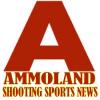| Online: | |
| Visits: | |
| Stories: |

| Story Views | |
| Now: | |
| Last Hour: | |
| Last 24 Hours: | |
| Total: | |
Minnesota DNR Seeks Volunteers for Frog and Toad Calling Survey
(Before It's News)

Minnesota -(Ammoland.com)- The Department of Natural Resources’ Nongame Wildlife Program is seeking volunteers to participate in the Minnesota Frog and Toad Calling Survey to help track population changes in the state’s 14 frog and toad species.
Frogs and toads are one of the best indicators of wetland health.
New volunteers receive a kit that includes a CD containing calls of Minnesota’s frog and toad species, a poster of the state’s frogs and toads, a map of a pre-defined route in an area of their choice, and directions on how to run the route. A vehicle is required to travel between stops.
Participants will then conduct nighttime “listening surveys” on three nights between April and July to capture seasonal variations in frog and toad species (early spring, late spring, and summer). These 10-stop routes are run after dark and in good weather. Participants will record their information on datasheets provided in their volunteer kit.
“Without the dedication of generous volunteers, this project would not be possible,” said Heidi Cyr, volunteer coordinator for the Nongame Wildlife Program. “Many frog and toad species are indicators of habitat quality and provide valuable information on the condition of Minnesota’s wetlands. The volunteers’ reports also help us track the health of the state’s frog and toad populations.”
Help is needed statewide, but especially outside of the metro area. Anyone interested in learning frog and toad calls and participating in this survey should check the route availability map at https://www.pwrc.usgs.gov/naamp/, choose a route, and then email Cyr at [email protected].
To learn more visit www.dnr.state.mn.us/volunteering/frogtoad_survey/index.html.
The survey is part of the nationwide North American Amphibian Monitoring Program.
With the continued help of Minnesotans who volunteer their time and donate to the Nongame Wildlife Checkoff on their state income tax returns, the program is able to conduct surveys and research studies to help keep Minnesota a state rich in wildlife resources.
Source: http://www.ammoland.com/2015/04/minnesota-dnr-seeks-volunteers-for-frog-and-toad-calling-survey/



